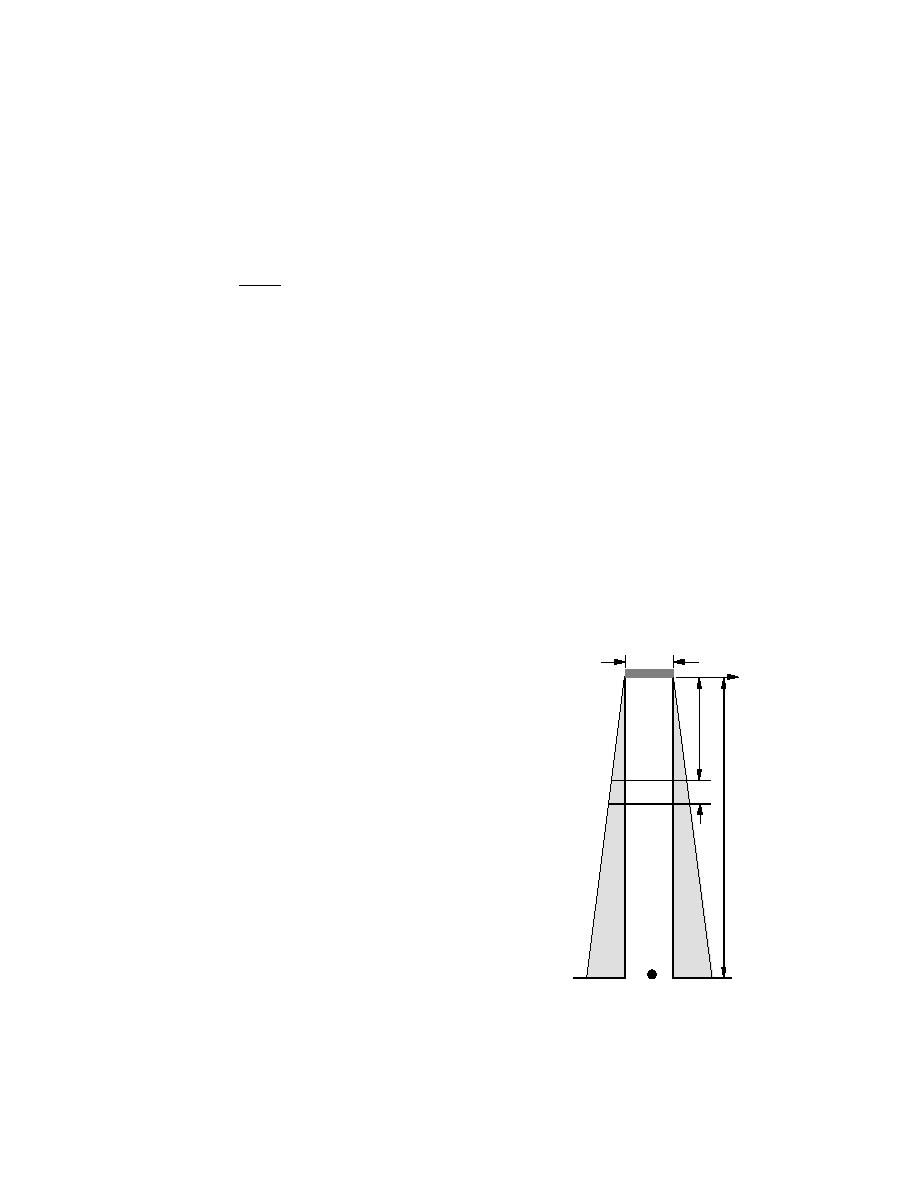
Burmeister's solution
Burmeister (1982) combined eq 16 and 17 into a single equation and obtained an
approximate analytical solution for it. His solutions for the tip temperature θ(0), heat
transfer rate q, and fin efficiency are
θ (0) = 1/ cosh F
(30)
(
)1/7 tanh6/7 F
q = 1.8263kl (Tsat - Tfb ) F1F2
3
(31)
6/7
tanh F
η=
(32)
F
where
(
)1/8 .
F = 1.038 F1F2
4
(33)
The efficiency values predicted by eq 32 are in close agreement with the values given in
Table 2.
Archarya et al. solution
Archarya et al. (1986) considered vertical fins (Fig. 6) of seven profile shapes, namely
rectangular, triangular, trapezoidal, concave parabolic, convex parabolic, cylindrical and
conical. For each geometry, they solved eq 13 and 14 numerically and obtained the results
for η. For all seven shapes, the efficiency could be represented by a simple relationship of
the form
η = η0.855
(34)
c
where ηc is the efficiency of the fin calculated from classical one-dimensional fin theory
and assuming the heat transfer coefficient to be con-
w
stant for all shapes, its value being given by eq 24.
y
in Kern and Kraus (1972).
X
Improved conjugate model
Kazeminejad (1993) improved the simple conju-
gate model described by eq 1618 by including the
dx
Saturated
effect of vapor velocity. As expected, the effect of
Vapor, Tsat
L
vapor shear was to reduce the condensate film thick-
ness and hence increase the fin surface temperature.
kf
The heat transfer to the fin and its capability to sup-
port condensation is considerably enhanced.
Patankar and Sparrow (1979) considered film con-
Film
densation on a vertical rectangular fin, which is at-
tached to a cooled vertical base at temperature Tfb
(Fig. 7). The fin has length L, thickness w and depth
Tfb
H, and is made of a material with thermal conduc-
tivity kf. The fin is immersed in a pure saturated
Figure 6. Condensation on a vertical
vapor at temperature Tsat (> Tfb).
fin of rectangular profile.
11




 Previous Page
Previous Page
